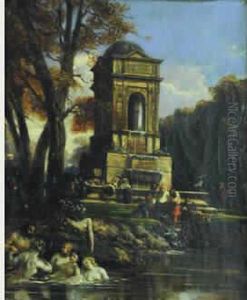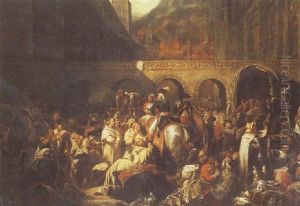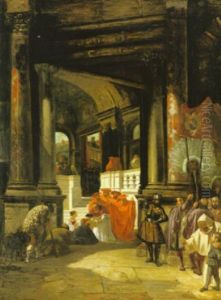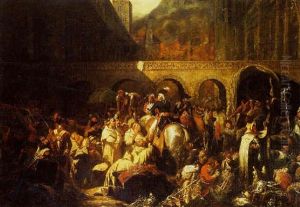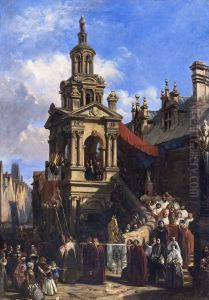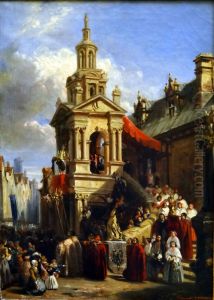Clement Boulanger Paintings
Clément Boulanger was a French painter, primarily known for his historical paintings and his work as a lithographer. He was born in 1805 in Paris, France, into a period of significant artistic and political change. Boulanger's work is often associated with the Romantic movement, which was characterized by its emphasis on emotion, individualism, and the glorification of the past and nature.
Boulanger studied under prominent artists of the time, including the neoclassical painter Jean-Auguste-Dominique Ingres, who was known for his finely detailed portraits and historical scenes. Under Ingres's tutelage, Boulanger honed his skills in drawing and composition, elements that would become central to his own artistic practice. Despite Ingres's neoclassical leanings, Boulanger was more drawn to the drama and emotionality of the Romantics.
Through his artistic career, Boulanger produced a body of work that included historical scenes, often imbued with a sense of drama and theatricality. His paintings often depicted moments from French history, classical antiquity, or literature, rendered with a vividness that was intended to stir the viewer's emotions. Boulanger's use of color and his dynamic compositions helped to capture the movement and energy of the scenes he portrayed.
Unfortunately, Clément Boulanger's career was cut short by his untimely death in 1842, at the age of 37. His passing meant that his body of work was relatively small, and he did not have the same lasting impact as some of his contemporaries. Nevertheless, his paintings are still appreciated for their contribution to the Romantic movement in French art, and they can be seen in various museums and collections in France and around the world.
Boulanger's legacy is that of a skilled painter who captured the spirit of his time, even as he worked in the shadow of the giants of French art. His works remain a testament to the Romantic ideals that influenced so much of the art and literature of the early 19th century.

